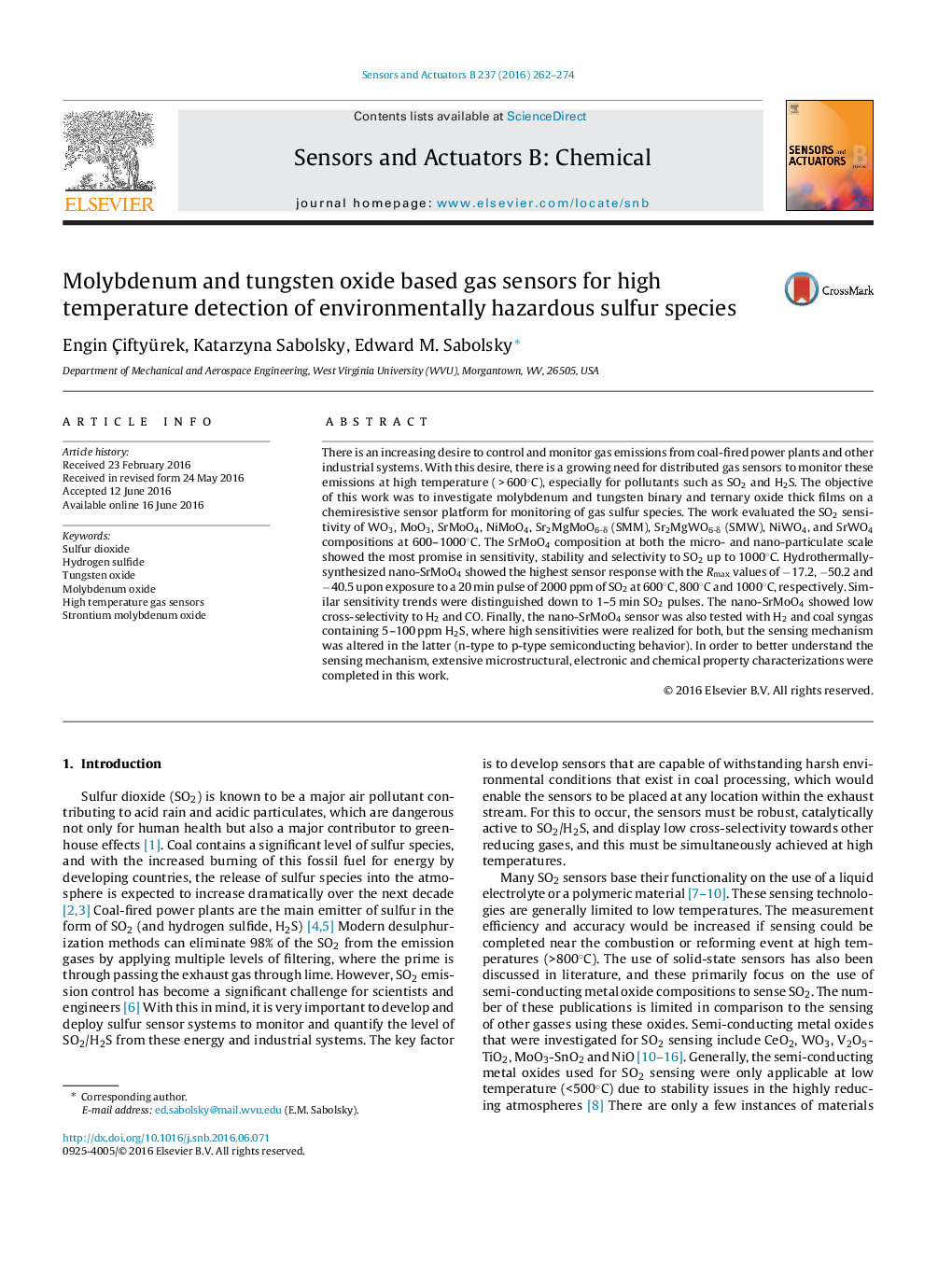| کد مقاله | کد نشریه | سال انتشار | مقاله انگلیسی | نسخه تمام متن |
|---|---|---|---|---|
| 742255 | 1462054 | 2016 | 13 صفحه PDF | دانلود رایگان |
• Evaluation and comparison of eight different tungstates and molybdates for sulfur dioxide sensing were completed for high temperature applications.
• SrMoO4 was identified as the choice material for sulfur species at 600–1000°C on a resistive-type sensor architecture.
• SrMoO4 with highly anisotropic nano-flower morphology was synthesized via hydrothermal technique and well-characterized.
• SO2, H2S, coal syngas, CO and H2 tests were completed for nano-SrMoO4.
• Based on surface analysis and electronic properties characterization, a sulfur sensing mechanism was proposed.
There is an increasing desire to control and monitor gas emissions from coal-fired power plants and other industrial systems. With this desire, there is a growing need for distributed gas sensors to monitor these emissions at high temperature ( > 600°C), especially for pollutants such as SO2 and H2S. The objective of this work was to investigate molybdenum and tungsten binary and ternary oxide thick films on a chemiresistive sensor platform for monitoring of gas sulfur species. The work evaluated the SO2 sensitivity of WO3, MoO3, SrMoO4, NiMoO4, Sr2MgMoO6-δ (SMM), Sr2MgWO6-δ (SMW), NiWO4, and SrWO4 compositions at 600–1000°C. The SrMoO4 composition at both the micro- and nano-particulate scale showed the most promise in sensitivity, stability and selectivity to SO2 up to 1000°C. Hydrothermally-synthesized nano-SrMoO4 showed the highest sensor response with the Rmax values of −17.2, −50.2 and −40.5 upon exposure to a 20 min pulse of 2000 ppm of SO2 at 600°C, 800°C and 1000°C, respectively. Similar sensitivity trends were distinguished down to 1–5 min SO2 pulses. The nano-SrMoO4 showed low cross-selectivity to H2 and CO. Finally, the nano-SrMoO4 sensor was also tested with H2 and coal syngas containing 5–100 ppm H2S, where high sensitivities were realized for both, but the sensing mechanism was altered in the latter (n-type to p-type semiconducting behavior). In order to better understand the sensing mechanism, extensive microstructural, electronic and chemical property characterizations were completed in this work.
Journal: Sensors and Actuators B: Chemical - Volume 237, December 2016, Pages 262–274
